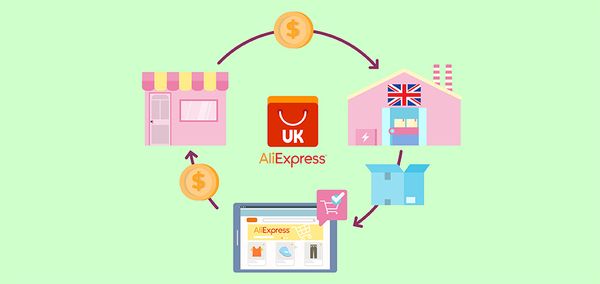How to Use Cohort Analysis to Measure and Improve Customer Retention

Your company should put a lot of effort into developing a solid retention plan for numerous reasons. To begin with, the price of acquiring new clients is five times higher than the price of keeping current ones. Additionally, companies with poor customer stickiness quickly run out of new clients and finally fall into a cycle of declining profits.
However, how can your company guarantee client retention in this era of many options and ephemeral brand loyalty? Can methods used in data analytics, such as cohort analysis, be of assistance? This blog's concept is that.
What Is Cohort Analysis
A cohort is a collection of users who have been together for a specific amount of time and have a common trait. The analysis of these users' shared traits over a predetermined period is known as a cohort. These may comprise both new and current users, as well as their future actions, such as repeat purchases or extended periods of inactivity.
Thousands of definitions of cohort analysis may be found online. A typical marketer would find it challenging to comprehend all of them. Cohorts, RFM segmentation, shifting curves, and other technical terms are often used, which only serves to muddle matters further.
Why Use Cohort Analysis
An approach utilized to comprehend the path of your consumer base is cohort analysis. You may see where clients are coming from, how long they've been a customer of yours, what they buy most often, and other information.
Marketing professionals might find chances for new marketing initiatives by using cohort analysis.
It may assist in identifying which clients are likely to leave soon so that retention offers can be made to them before their departure.
What Is Customer Retention Measured by Cohort Analysis
Cohort analysis is a straightforward statistical method for analyzing consumer behavior over time. It examines the consumer cohorts formed at various points in time. Cohort analysis is a useful technique for customer risk assessment, customer communication, and retention monitoring.
Types of Cohort Analysis
There are mainly two types of Cohort Analysis which are:
Acquisition Cohorts
Users are divided into groups based on when they purchased or registered for a product, or what is known as an acquisition cohort. The acquisition, or the moment they signed up for a product, must take place within a certain time frame, just as with any other cohort. The acquisition event comprises, among other things, buying a product, installing an app, and signing up with a brand.
The question of Who and When—who is purchasing the items and when did they make their first purchase—are often addressed by this kind of cohort. They also help the company accurately gauge customer retention and churn rates over a certain period by measuring the number of new customers who are abandoning the service for a predetermined duration.
Depending on the product, user acquisition might be monitored daily, weekly, or monthly.
An application developer is an excellent illustration of the value of acquisition cohorts analysis. You may divide the number of users who downloaded the app into cohorts by day for the first week after launch, by week for the first month, and so on to assess the performance of a recently released app. You can then view how many users have returned to the app after beginning at their separate starting locations.
When the retention rate begins to decline, you can observe where it does so. Is it after the first day of use? Or the first week? Initial month? This reduces the range of possible problems that can result in client attrition.
Naturally, the data the acquisition analysis offers only displays numerical data and statistical information. It doesn't address the causes of client attrition. The other kind of cohort analysis is helpful in this situation.
Behavioural Cohorts
Users are divided and categorized into behavioral cohorts according to the behaviors they conduct after purchasing the product during a certain time range. The little behaviors and activities a user engages in have an impact on whether they continue to appreciate the product. For instance, making use of a particular function, how often they post on social media, how many TV series they watch in a row after signing up for a streaming service, or the restaurants they choose on a food delivery app.
Using behavioral cohorts has the benefit of giving you an additional understanding of your user base. This gives you the ability to monitor what users do and don't do with your product.
Acquisition cohorts are unable to identify the precise causes of client turnover or retention. However, behavioral cohort analysis enables the company to evaluate typical user behaviors among those who use their product the most. Additionally, you may monitor to see how long users are engaged after interacting with a more challenging component of your product.
In the end, cohorts analysis of this kind enables you to see the demand for a certain feature set and determine if it's worthwhile to spend money, time, and effort on it. It demonstrates how user involvement and engagement with your product may impact customer retention and revenue.
How to Use Cohorts Analysis Measure Customer Retention
Customer retention is crucial to a business's success. It speaks to a company's capacity to attract new clients and retain them. Because it refers to clients who are already consistently making purchases from a certain brand or company and are not actively exploring elsewhere, it contrasts with customer loyalty.
Because retaining customers is often the first step in building customer loyalty, customer retention and loyalty are related.
You should monitor the following indicators to gauge and enhance client retention:
Customer Retention Rate
The customer retention rate is the most visible and simple indicator to gauge client retention. To determine whether or not your company is performing well, it's critical to know how many of your client base is becoming repeat customers and how many repeats business you are bringing in.
A percentage is used to represent the client retention rate. Subtracting the number of new customers from the total number of customers after a period will give you this percentage. Next, multiply the figure by 100 after dividing it by the total number of consumers you had at the start of the time.
CRR = {(NCE – NEW / NCS)} x 100
- CRR: Customer Retention Rate
- NCE: Number of Customers by the End of the period
- NEW: NEW Customer acquired during the period
- NCS: Number of the Customer at the start of the period
Churn Rate
The proportion of consumers that ceased using your product during a certain period is measured by your churn rate. A corporation should typically analyze what could be affecting its customer happiness and take the required steps if its turnover rate reaches 5-7% or higher.
The customer churn rate and the revenue churn rate are two different forms of churn rates.
The rate of clients who have discontinued doing business with you is known as the customer churn rate. This can include their stopping all interactions with your business or canceling a subscription.
There are several customer turnover rate formulae, which is a nice fact. It's a subject that has generated a lot of discussion in data science and marketing. The easiest formula for customer churn rate is:
Churn Rate = Number of Churned Customers / Number of total Customer
However, experts have noted that the churn rate calculated using this technique is skewed by corporate expansion or any new customer acquisitions. Both the number of consumers that leave your business and the overall number of customers may increase when your business experiences considerable growth. Even if you lose more customers than the previous month, your churn will still go down as long as your entire customer base grows.
As a result, several companies have offered solutions for calculating client attrition rates.
Churn Rate = (NCES - NCEE) / NCES
- NCES: Number of Customers at the start of the period
- NCEE: Number of Customers at the end of the period
The second Formula for Churn Rate is:
Churn Rate = NCC / {(NCES + NEW) / 2}
Revenue Churn Rate
On the other hand, this kind of churn rate conveys the proportion of revenue that the company has lost from repeat customers over a certain period. Several actions taken by current customers might cause revenue to churn. This includes lowering a membership or canceling a purchase.
The methodology involves reducing money from upselling or cross-selling to current customers from the result after dividing monthly recurring revenue at the end of the month by monthly recurring revenue at the beginning of the month. The last step is to divide the outcome by the monthly recurring income at the beginning of the month.
The monthly average is used to determine revenue churn. Furthermore, achieving a negative revenue churn rate is advantageous since it indicates that monthly revenue gains from current customers balance monthly revenue losses.
Existing Customer Revenue Rate
This indicator essentially counts the money you are making from satisfied, loyal, and repeat customers. If this rate keeps growing, the marketing team is successfully boosting purchase frequency, cross-selling, and other revenue-generating strategies. If not, the pace of revenue growth from current customers will flatten or decline.
A flat rate of revenue growth from current customers is particularly risky since it indicates that your business is not developing and improving. This can make it difficult for your company to remain viable in the long term.
The monthly recurring income from existing customers at the beginning of the month should be subtracted from the monthly recurring revenue from existing customers at the end of the month to determine the rate. The subsequent step is to split the outcome by the monthly recurring income from current clients at the beginning of the month.
Existing Customer Revenue Growth Rate = (MRRE - MRSS) / MRSS
- MREE: Monthly Recurring Revenue from Existing Customers at the end of the month
- MRSS: Monthly Recurring Revenue from Existing Customers at the start of the month
Daily, Weekly, and Monthly Active Users
Customer churn is often shown when they begin using your product less and less. By making sure your users are engaged, you can avoid this. This may be accomplished by examining the behavioral data acquired and utilizing it to develop a plan for the best technique the business can use to engage the clients.
Following that, it's crucial to keep an eye on activity and engagement. New tactics should be used if the engagement threshold is still not reached.
Conclusion
A company's success ultimately depends on its connection with its customers. It is improbable that your firm can be sustained at all if you do not prioritize client happiness while creating your goods and services. A thorough cohort analysis is undoubtedly very helpful in this.
You can accurately identify user interaction patterns and pinpoint any possible problems so that you can take action to keep your customers happy. Customer retention rate is undoubtedly a crucial indicator of the general effectiveness of a marketing campaign, but cohort analysis gives that success a visual representation. Understanding your customers' habits and preferences can help you strengthen current connections with them and win over new ones in the long run.












 Company
Company
 Why Choose DSers
Why Choose DSers
 Blog
Blog
 Help Center
Help Center




 Live Chat
Live Chat